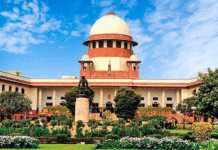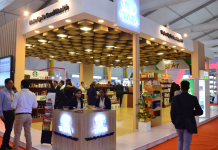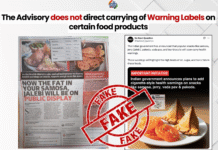Nestlé is expanding its Nescafé Ready-to-Drink cold coffee range to India, the Middle East and North Africa (MENA) region and Brazil to meet the needs of young consumers who prioritize convenience, variety and on-the-go options that align with their fast-paced and dynamic lifestyles.
Ready-to-drink beverages are the fastest-growing coffee segment globally, growing at double digit largely driven by cold coffee consumption among Gen Z and millennial consumers. In India, the MENA region and Brazil, where approximately a quarter of the population1 are young people, Nestlé is tapping into the potential of these markets with its Nescafé Ready-to-Drink range, which includes varieties like latte, cappuccino and mocha as well as flavors, such as chocolate, or caramel. Ready-to-Drink coffees provide consumers with tasty, cold coffee on the go, making them a convenient, popular choice for many.
“With Nescafé Ready-to-Drink, we want to bring new consumers to the coffee category and create completely new coffee-drinking occasions,” said Michael Briner, zone AOA and global category lead for Ready-to-Drink at Nestlé’s coffee brands strategic business unit. “Our delicious varieties provide the perfect refreshment to enjoy with friends, on the go, at home, or wherever you prefer. With markets like India and those in MENA having largely been untapped up until now, we are confident we can grow the cold coffee category in these geographies.”
The launch of Nescafé Ready-to-Drink coffee in India, MENA and Brazil builds on successful launches in China, Thailand, Indonesia, Malaysia, Singapore, Japan and Turkey – countries where the ready-to-drink culture is well established and growing. The Nescafé Smoovlatte Original Ready-to-Drink beverage in China is Nescafé’s single bestselling product globally.
IndiFoodBev — authentic, impactful and influential
An English-language food and beverage processing and packaging industry B2B platform in print and web, IndiFoodBev is in its third year of publication. It is said that the Indian food and beverage industries represent approximately US$ 900 billion in revenues which implies more than 20% of the country’s GDP. Eliminating the wastage on the farmside can help to deliver more protein to a higher number of the population apart from generating sizable exports. The savings in soil, seeds, water, fertilizer, energy and ultimately food and nutrition could be the most immense contribution that country is poised to make to the moderation of climate change.
To improve your marketing and grow sales to the food and beverage processing and packaging industry, talk to us. Our research and consulting company IppStar [www.ippstar.org] can assess your potential and addressable markets in light of the competition. We can discuss marketing, communication, and sales strategies for market entry and growth.
Suppliers and service providers with a strategy and budget for targeted marketing can discuss using our hybrid print, web, video, and social media channels to create brand recognition linked to market relevance. Our technical writers are ready to meet you and your customers for content.
The second largest producer of fruit and vegetables in the world is continuously expanding processing capacities and delivery systems with appropriate innovative technologies. We cover product and consumer trends, nutrition, processing, research, equipment and packaging from farm to thali. Get our 2025 media kit and recalibrate your role in this dynamic market. Enhance your visibility and relevance to existing markets and turn potential customers into conversations. Ask for a sample copy of our bi-monthly in print or our weekly IndiFoodBev eZine each Wednesday.
For editorial info@ippgroup.in — for advertisement ads1@ippgroup.in and for subscriptions subscription@ippgroup.in
Naresh Khanna – 10 February 2025
Subscribe Now












